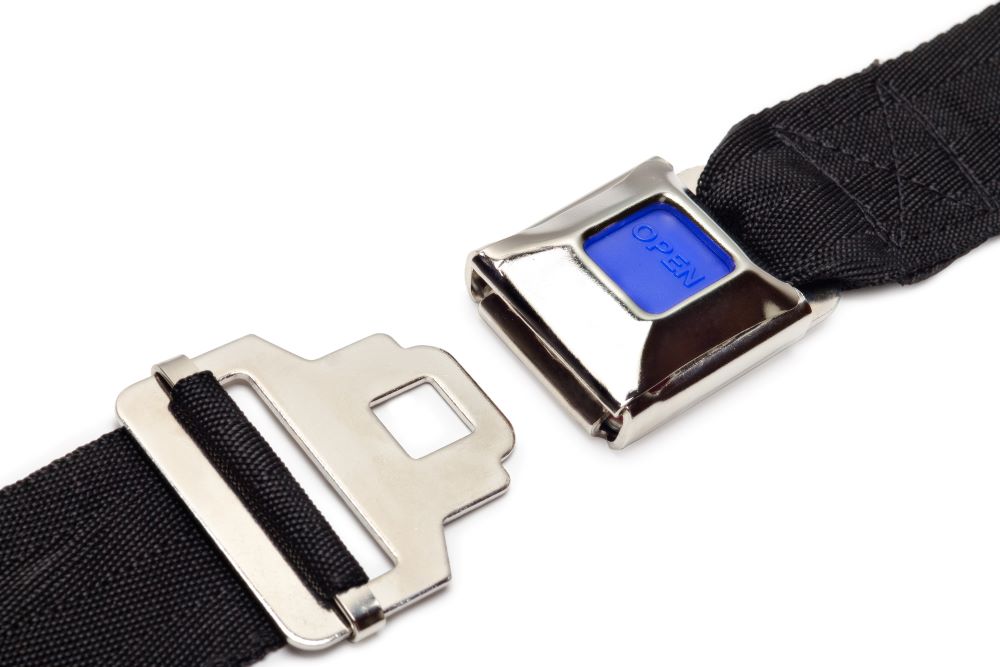What is a Seat Belt Pretensioner: Purpose, Types and Working Principle Explained

The safety of a driver, as well as a passenger, is of utmost importance. This is why manufacturers have developed various safety aids like seat belt pretensioner.
This article describes the purpose, types and other details of this advancement of seat belts and how it has enhanced safety.
What is a Seat Belt Pretensioner?
A seat belt pretensioner is designed to secure a passenger in their seat by applying tension just prior to and during a collision, particularly in situations like a frontal or head-on impact. Subsequently, it facilitates a passenger's interaction with the inflated airbag in a controlled manner.
The inclusion of a pretensioner is an enhancement to the standard seatbelt. Despite the primary aim of seatbelts being to minimise severe injuries and save lives, extensive research and crash testing has revealed that the seatbelt alone has certain limitations that warrant improvements.
Seatbelt pretensioners are an integral part of the seatbelt system and are responsible for securing the seatbelt firmly in position when a crash occurs.
What is the Purpose of a Seatbelt Pretensioner?
Here are some of the reasons why a seat belt pretensioner is an integral part of a seatbelt:
Enhance the effectiveness of seatbelts during a collision.
Reduce the slack in the seatbelt and secure passenger tightly to the seat.
Eliminating excess seatbelt slack minimises the risk of the passenger being thrown forward during impact.
It activates just before or at the onset of a collision, quickly retracting the seatbelt to remove any slack.
By restraining a passenger's movement, the seatbelt pretensioner helps to prevent secondary collisions with vehicle components or occupants.
It works with other safety features, such as airbags, to optimise occupant protection in a controlled manner.
Overall, seatbelt pretensioners improve the effectiveness of seatbelt systems in reducing injuries and saving lives during crashes.
What are the Types of Seat Belt Pretensioner?
There are primarily three types of seat belt pretensioners:
Electrical Pretensioner
An electrical pretensioner functions by substituting the pendulum mechanism with an electronic sensor. It is also interconnected with various car safety systems, including the airbag deployment system and rollover sensors.
As a result, electrical pretensioner is regarded as more efficient during a collision, as it collaborates with airbags to provide enhanced protection.
Due to its reliance on specific car sensors, the accidental activation of the electrical pretensioner is eliminated, ensuring its precise and controlled operation.
Mechanical Pretensioner
This particular seat belt pretensioner uses an inertial wheel and a pendulum mechanism. When a collision occurs, these components work in tandem to secure the seat belt, preventing abrupt movement of the car's occupants.
One drawback of mechanical pretensioners is their susceptibility to being triggered in situations other than car accidents. For instance, a sudden forceful pull on the seat belt or traversing down a steep incline may cause the belt to tighten, inadvertently activating the pretensioner.
Pyrotechnic Pretensioner
Most modern vehicles are now outfitted with pyrotechnic pretensioners, representing the most advanced form of seat belt pretensioner. Unlike other types, these pretensioners do not lock the seat belt abruptly upon rapid deceleration.
Instead, they gradually tighten the belt to eliminate any remaining slack, thus reducing the occupant's movement and positioning them in a safer posture during a collision.
However, it's important to note that pyrotechnic pretensioners are not reusable. Once activated, they require immediate replacement to maintain their functionality in subsequent incidents.
What is the Working Principle of Seat Belt Pretensioner?
When a collision or crash occurs, a seat belt pretensioner is activated upon receiving a signal from a sensor. This activation generates an electric charge that triggers a piston within the pretensioner, causing a spool to coil quickly. The seat belt fabric is then tightly wound around the spool, effectively tightening any slack in the belt.
By aligning the occupants in a secure position during the crash, the pretensioner enhances their protection and works in conjunction with the airbags.
Suppose you experience any difficulty while trying to fasten your seat belt. In that case, it is essential to have your pretensioners inspected by a trained expert due to the advanced nature of this device. Regularly monitoring the condition of your seat belt pretensioners as part of your scheduled car maintenance routine can help prevent significant consequences.
















